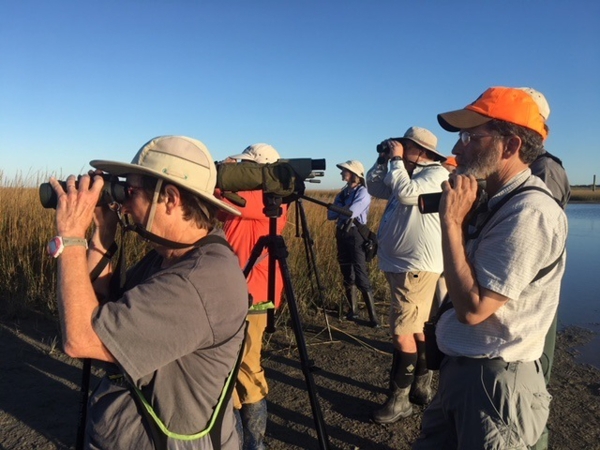
Pea Island is a world-renowned hotspot for birders. Over 370 species of birds have been recorded on the refuge, including annual concentrations of thousands of wintering ducks, swans, and geese.
Birds of the Outer Banks Brochure
There are many popular areas for birding on the refuge. At Oregon Inlet, on the north end of the refuge, shorebirds and waterbirds concentrate in the inlet and the dune vegetation shelters warblers and sparrows. In fall and winter, thousands of waterfowl and shorebirds may be seen foraging in North Pond, viewed from the observation platform on the Salt Flats Wildlife Trail, the photo blind off of Highway 12, or the observation tower on the North Pond Wildlife Trail. Another observation platform south of the refuge visitor center on Highway 12 provides a vantage point on New Field and South Ponds, which can have thousands more ducks, swans, geese, herons, egrets, and shorebirds. Trails over the dunes at the Visitor Center and the New Field/South Pond platform provide access to the beach and ocean, home to many species of shorebirds and waterbirds. Raptors are regularly seen on the refuge, especially during fall migration, and include bald eagles and peregrine falcons. In addition to the spectacle of the sheer number of birds, rare species turn up regularly on the refuge, such as Eurasian wigeon, Ross’s goose, and snowy owl.
Birding is allowed in all areas open to the public. Obey all posted signs and do not enter any areas marked with 'Area Closed' signs. The refuge dikes around South Pond and New Field ponds are closed to all entry to prevent disturbance to the waterfowl. During summer, temporary closures are set up around seabird nesting colonies. Please give these birds space and stay away from nesting areas to minimize disturbance during this sensitive period of their life cycle.
